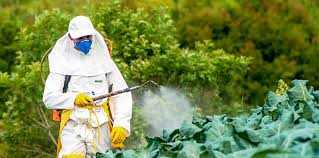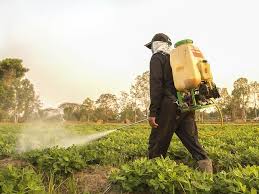The following are the reasons for increasing pesticide use and abuse in less developed countries;
1. Use of Increasingly Sophisticated Technology
Numerous international organizations and governments are engaged in efforts to encourage industrialization in the Third World. Both multinational development banks (MDBs) and governmental programs such as the U.S. Agency for International Development (USAID) have funded numerous Third World development projects, particularly in agriculture, which accounts for approximately twenty-five percent of all loans awarded by the World Bank.
Intense agricultural development aimed at equipping LDCs with resources to produce foods for domestic consumption and export use is commonly referred to as the green revolution.The green revolution has provided many incentives to multinational corporations (MNCs) involved in agribusiness to locate manufacturing facilities in LDCs and to target sales of their agricultural products to the developing countries.
Generally, MNCs have successfully influenced government policy in LDCs, advocating agricultural programs that have provided considerable windfalls.

2. Agricultural Goals
The ever-increasing technological sophistication of agriculture and the developed countries’ encouragement of Third World development have drastically expanded the type and amount of pesticides used throughout the world, particularly in the LDCs.
Agriculture programs in LDCs emphasize the production of cash crops for export in order to help alleviate LDC national debt.
As a result of the marketing influences of agricultural chemical companies, farmers in LDCs introduced foreign high-yielding hybrid seeds, which lacked natural resistance to indigenous pests. The Food and Agriculture Organization estimates that by the year 2000 sixty-seven percent of the seeds distributed for use in Third World agriculture will be foreign hybrid varieties.
In addition, cash crop marketing influences are creating plant monocultures-uniform plantings of one plant variety-in the Third World.
Plant monocultures present a further problem because nondiverse plant populations are more vulnerable to pest infestation. Pests can destroy entire monoculture crops and cause the loss of an entire growing season.
Thus, the agricultural goals of LDCs and the introduction of new hybrid seed varieties create an increasing need and dependency on greater volumes of more toxic pesticides for adequate pest control.
3. The Pesticide Tread mill
The phenomenon of continually replacing a prior pesticide with a new, more toxic pesticide is often referred to as the pesticide treadmill. Part of the problem of pesticide use in the control of pests is that it both promotes the development of pesticide-resistant insect strains and disturbs the natural system of checks and balances on pest populations.
Certain pests, particularly insects, have exhibited an extraordinary ability to become resistant to pesticides. Insects multiply frequently and in great numbers. This multiplication allows for extensive genetic restructuring and potential adaptation to any given poison through natural selection processes.
Moreover, the imposition of artificial control on pest populations disturbs the existing, time-evolved methods of natural pest control, Pesticides that are specifically applied to a given pest type may result in the pest’s competitor or prey reproducing more prolifically, hence further disrupting the agricultural plants in need of protection.
Proliferation of pest populations, caused by a resistance to a given pesticide or a specific targeting of one pest, result in the use of increasingly toxic pesticides that have broader impact upon the environment and the level of exposure to people and food in LDCs.
4. Lack of Standards and Guidelines for Chemical UseinLDCs
As discussed above, the U.S., which stringently restricts the domestic use of pesticide chemicals and whose industries account for more than one-third of the pesticides produced in the world, has very little regulatory control over pesticides produced solely for export.
In addition, in LDCs there is little or no regulation of pesticide imports. One source estimates that forty percent of Third World countries have no regulations governing imports, and those countries which have such regulations have insufficient funds to enforce them adequately. As a result, LDCs are the dumping grounds for the most toxic pesticides available.
Read Also : Proper Methods of Disposal of Dilute Pesticide Waste
Even where LDCs have some facility to regulate pesticide use, conflicting priorities and a lack of sufficient regulatory control disrupt pesticide programs. Furthermore, some MNCs that have a stake in the sale of pesticides have proven quite effective at influencing government policies and advocating pesticide use.
5. Physical and Cultural DisparityinLDCs
The physical and cultural environment determine how safely and effectively a given pesticide can be used in LDCs. Pesticides that are promoted for use in LDCs often are not matched accurately to the specific environment in which they will be used.
Unforeseen reactions with plant and animal species as well as the physical environment, such as climate, can make otherwise safe chemicals dangerous or ineffective.

